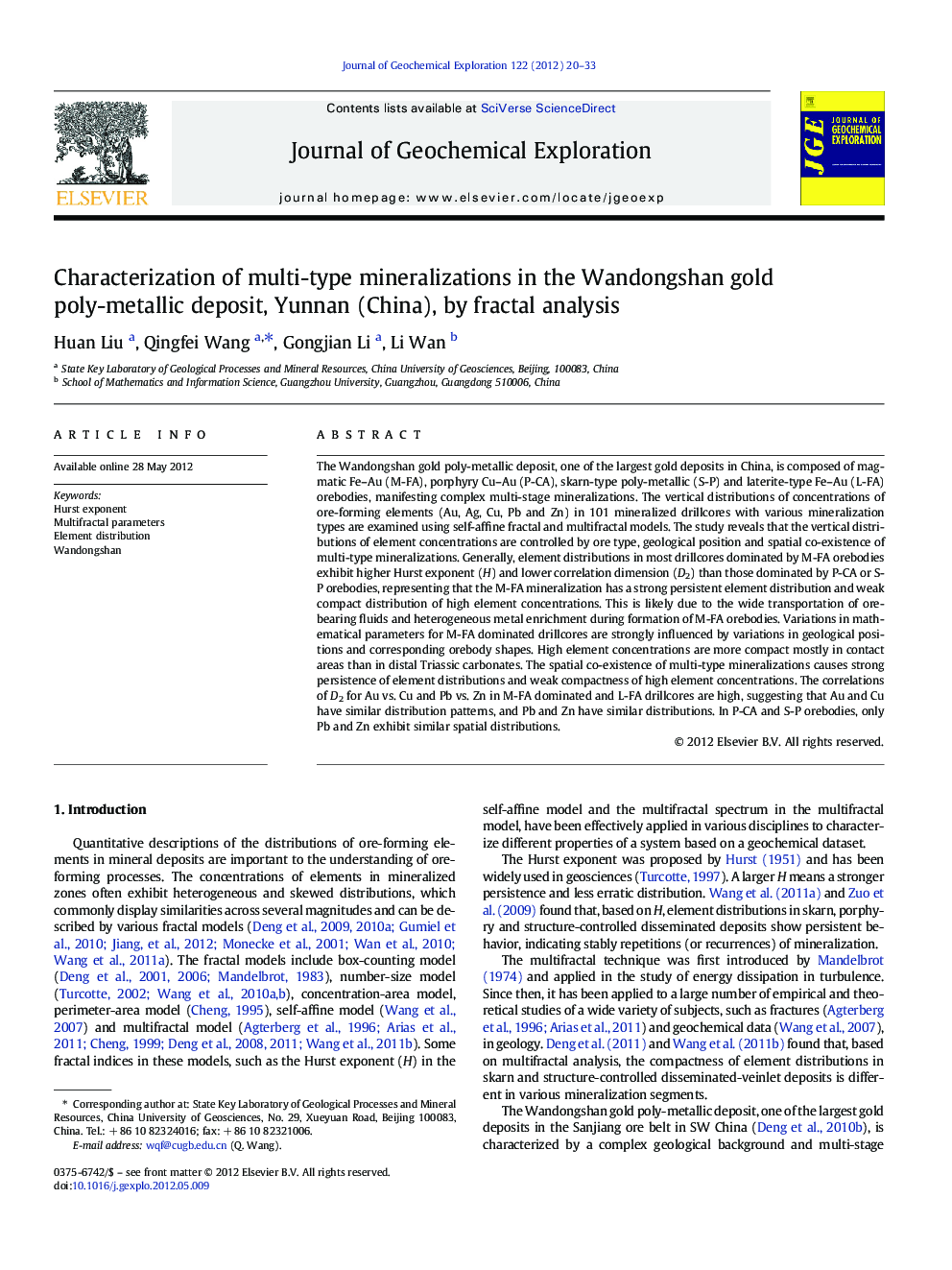| Article ID | Journal | Published Year | Pages | File Type |
|---|---|---|---|---|
| 4457705 | Journal of Geochemical Exploration | 2012 | 14 Pages |
The Wandongshan gold poly-metallic deposit, one of the largest gold deposits in China, is composed of magmatic Fe–Au (M-FA), porphyry Cu–Au (P-CA), skarn-type poly-metallic (S-P) and laterite-type Fe–Au (L-FA) orebodies, manifesting complex multi-stage mineralizations. The vertical distributions of concentrations of ore-forming elements (Au, Ag, Cu, Pb and Zn) in 101 mineralized drillcores with various mineralization types are examined using self-affine fractal and multifractal models. The study reveals that the vertical distributions of element concentrations are controlled by ore type, geological position and spatial co-existence of multi-type mineralizations. Generally, element distributions in most drillcores dominated by M-FA orebodies exhibit higher Hurst exponent (H) and lower correlation dimension (D2) than those dominated by P-CA or S-P orebodies, representing that the M-FA mineralization has a strong persistent element distribution and weak compact distribution of high element concentrations. This is likely due to the wide transportation of ore-bearing fluids and heterogeneous metal enrichment during formation of M-FA orebodies. Variations in mathematical parameters for M-FA dominated drillcores are strongly influenced by variations in geological positions and corresponding orebody shapes. High element concentrations are more compact mostly in contact areas than in distal Triassic carbonates. The spatial co-existence of multi-type mineralizations causes strong persistence of element distributions and weak compactness of high element concentrations. The correlations of D2 for Au vs. Cu and Pb vs. Zn in M-FA dominated and L-FA drillcores are high, suggesting that Au and Cu have similar distribution patterns, and Pb and Zn have similar distributions. In P-CA and S-P orebodies, only Pb and Zn exhibit similar spatial distributions.
► Multi-type mineralizations at Beiya have various featured fractal distributions. ► Spatial position and multi-type ores co-existence also affect element distribution. ► Contact magmatic Fe–Au orebodies often have dense high element concentrations.
